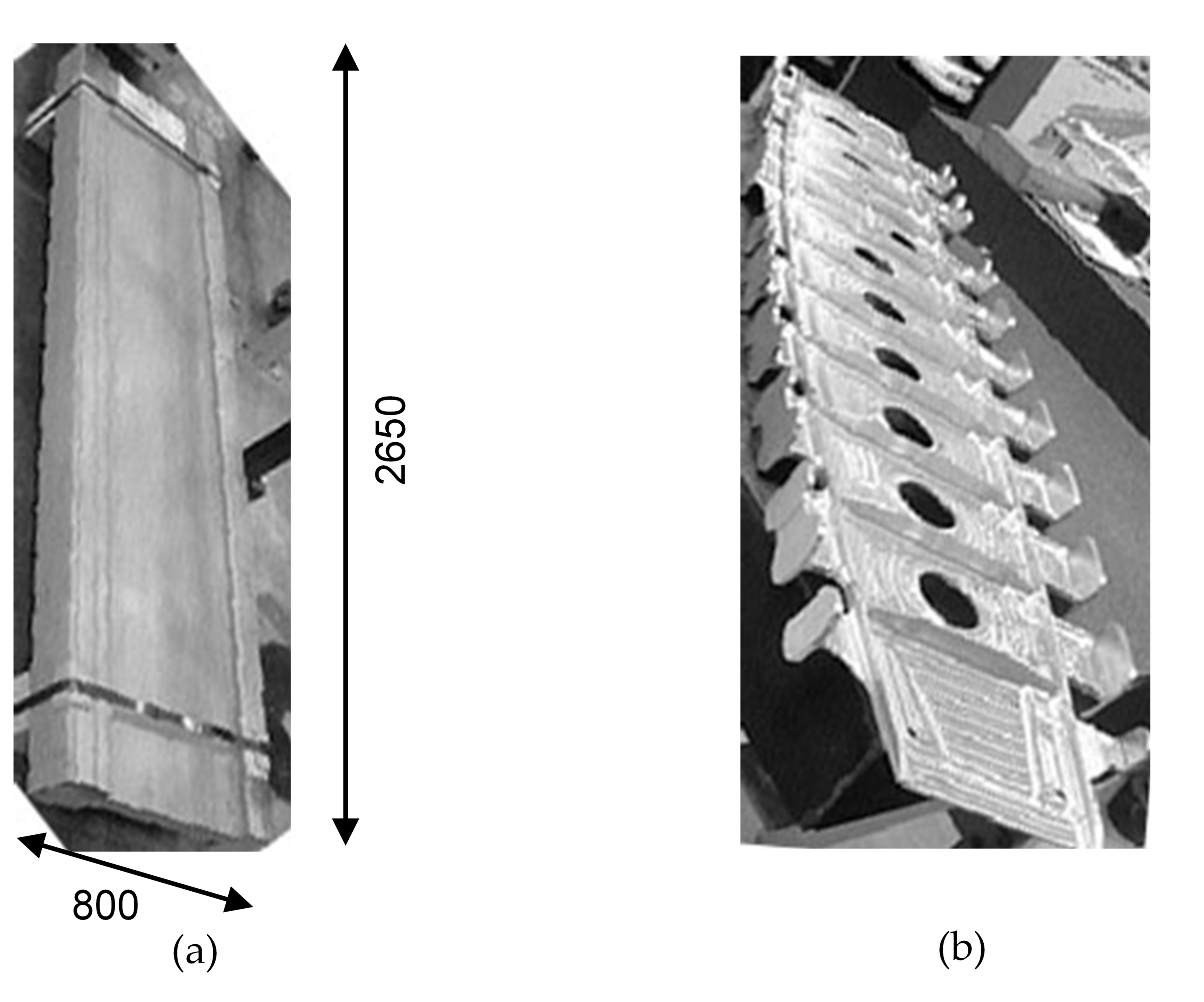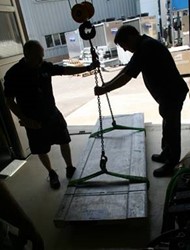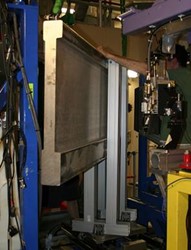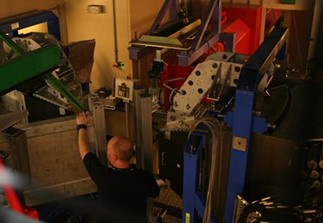Aircraft wings are made of a number of different parts, each of which are manufactured individually. To make these parts usually involves extruding a large block of aluminium alloy and then machining this into the correct shape. Although the stresses caused by cutting the block down to size can be predicted using computational modelling, the effects of the initial extrusion process on the residual stress of the material are not well understood.

Figure 1 - showing the extruded block and typical machined final piece
This study aimed to understand these effects using neutron diffraction. A 2m long, 400kg block, ready to be machined into an aircraft wing component, was brought to ENGIN-X. The researchers used the instrument to study its internal structure and the stresses present inside. This was challenging due to the large size and weight of the sample, but possible thanks to the way the beamline has been designed to study large engineering component.



Figure 2 - Images of the sample being loaded into Engin-X
In addition to their neutron measurements, the team from Oman's Military Technology College and Royal Flight Oman carried out Finite Element Analysis (FEA), which produced a model predicting the residual stress inside the extruded block both before and after being machined into shape.
The researchers measured the sample in different positions, and at different points, revealing a complex residual stress distribution within the block. Their results agreed with their FEA prediction, which means the researchers could validate their models, and can apply them to work out the best way to machine the final part in a way that relieves stress and minimises distortion.
“As an end user it was a great moment to have successfully completed the measurement as anticipated," said Dr Mohammad Sayeed Hossain, Military Technological College Oman. “Technical advice by the local contact during the measurement was highly valuable. Additional support by the HSE team at RAL ensured the safe handling of our gigantic sample within a confined space."
Further information
The full paper can be found at DOI: 10.3390/psf2022004019
